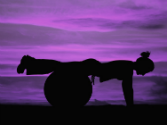 SparkPeople is a great source for all things fitness and nutrition related. I came across this article about cross training the other day (the 9 in the title caught my attention at first) and realized that I was using the same cross training in my exercise regime as they were suggesting. Swimming was on the top of the list (unfortunately my shoulder is preventing me from doing it these days), and so was biking. Other activities included elliptical training (not my favorite…), cross country skiing (not easily done without snow), and indoor rowing. For more information on SparkPeople follow the link! What are your favorite cross training routines?
SparkPeople is a great source for all things fitness and nutrition related. I came across this article about cross training the other day (the 9 in the title caught my attention at first) and realized that I was using the same cross training in my exercise regime as they were suggesting. Swimming was on the top of the list (unfortunately my shoulder is preventing me from doing it these days), and so was biking. Other activities included elliptical training (not my favorite…), cross country skiing (not easily done without snow), and indoor rowing. For more information on SparkPeople follow the link! What are your favorite cross training routines?
9 Cross Training Activites for Runners
The only way to become a better runner is to run, but the more running replaces other exercises in your fitness program, the more likely you are to become injured, suffer from burnout, or develop muscular imbalances. So what’s a runner to do (besides run, of course)? Cross train.
Cross-training, or taking part in alternative forms of exercise, should be part of every fitness plan because it helps reduce the risk of overuse injuries, improves muscular balance, targets your muscles in new and different ways, and aids in muscle recovery. In addition, cross-training can also prevent burnout and add a little fun and variety to your workout routine, while still helping you stay aerobically fit.
In this article, we’ll outline two approaches to cross-training for runners: 1) activities that complement running and 2) activities that enhance running. Depending on your training and health situation, you can select the activities that will work best for you. Try to include some form of cross-training at least one to three times per week for optimal results.
Cross-Training Activities that Complement Running
Complementary cross-training activities use your main running muscles in different ways, and engage additional muscles that you may never use while running. Performing these types of activities will allow you to build greater muscle strength and muscular balance, therefore reducing your risk for injury.
Swimming
Because swimming is a non-weightbearing activity, it gives the joints and connective tissues a break from the impact of running while allowing you to maintain aerobic fitness. Swimming can be a beneficial cross-training activity all runners, especially those recovering from injury. By targeting all the major muscle groups (quadriceps, hamstrings, glutes, abs, lower back and upper body), swimming allows your legs a break while developing the upper body musculature that is often neglected in runners.
Cycling
Cycling indoors on a stationary bike, at the gym in a Spinning class, or outdoors on the road or trail is another low-impact activity that can give your body a break from the high impact of running. Biking targets the quadriceps and shin muscles, which are slower to develop in runners and helps strengthen the connective tissue of the knees, hips and ankles, which may reduce your risk for injury. However, some running experts advise against cycling on non-run days because it can still be strenuous and exhausting to your muscles. So what do you do? If you want to cross train with biking, include it on your running days by running first and then cycling later in the day.
Indoor Rowing
The indoor rowing machine is not the most popular item in the gym, but it provides an amazing workout. Rowing is great for runners who want to develop strength in their quadriceps and hips while also improving upper body strength. Good form is necessary when using the rower, so read this article about proper rowing mechanics or ask a certified trainer for some pointers.
Stair Climbing
Whether you elect to climb stairs in your office building or at the gym on the stair stepping machine, heading up stairs provides an excellent workout for the quads and hip flexors. Because runners tend to have stronger hamstrings, cross-training activities that target the quadriceps can help you achieve better muscle balance, therefore reducing the injury risk.
Plyometrics
Plyometrics are high intensity, explosive exercises such as jumping, bounding and hopping drills. Jumping onto a box or step is one of the most popular. These activities can help improve a runner’s overall strength, speed, range of motion, push-offs and stride length, but they are best suited for highly conditioned athletes—not beginners. Using proper form is essential when performing explosive drills. Because of their high impact, landing improperly can lead to a greater incidence of injury. If you are not familiar with plyometrics, you may want to work with a certified personal trainer for a few sessions until you have mastered the techniques.
Walking
Many runners are surprised to hear that walking is actually a great cross-training activity. Unlike running, it’s low-impact, but it targets many of the same muscles and connective tissues. And because walking can be done almost anywhere at any time, doing a vigorous walk the day after an intense run is a great way to recover. If you choose to use walking as a cross-training activity on your non-running days, walk at a brisk enough pace to get the cardio-respiratory benefits. Remember to use good form and pump your arms to burn more calories and pick up the pace.
Cross-training Activities that Enhance Running
These activities are those that utilize the muscles, connective tissues and joints in a similar manner used in running but with lower impact on the joints. Many runners will use these workouts when recovering from an injury or when going through rehab, but you can try these workout ideas as preventive measures even when you’re not suffering from an injury.
Deep Water Running
Deep water running, also known as pool running, is exactly as the name implies: running in deep water. This is achieved by slipping on a flotation device, such as an AquaJogger, so that your legs are suspended off the bottom of the pool. This activity most mimics running on land without the impact on the joints. It makes a great cross-training activity for injured runners, but many healthy runners may find it quite boring. One of the disadvantages to pool running is the need to have access to an indoor pool during the colder months and/or a pool deep enough to perform this workout.
Elliptical Trainer
The elliptical trainer is one of the most popular cardio machines in the gym, and because it mimics running action without the impact, it makes an excellent cross-training activity. Even though the elliptical is a weight-bearing activity, it is low-impact for the joints. The elliptical also helps develop a runner’s core and leg muscles, and if you use one with the arm levers, the pushing and pulling motion allows you to develop a stronger arm swing therefore helping make you a more efficient runner.
Cross-Country Skiing
While many of us may not have the snow (or snow gear) to participate in this cross-training activity, an indoor cross country ski machine such as a Nordic Track offers similar benefits. Cross country skiing can help improve running economy (the amount of oxygen used during a run). Because the hips, quadriceps, core and upper body are all utilized in performing this workout, it allows for development of the weaker quadriceps without the impact. And one of the greatest benefits is the high-calorie expenditure that comes from doing this activity. If you are looking for an activity that burns as many (or more) calories as running does, the cross-country ski machine may be a great addition to your workout routine.
Please remember that cross-training should not replace a scheduled day off from running. Rest is just as vital to your training as running is, for it is during recovery that your body begins the adaptation process to making you a more efficient runner.
Running too much can lead to a greater incidence of injury and actually slow your progress and running performance. This is why cross-training plays such an important role in keeping us active and injury-free. Cross-training activities are meant to complement and enhance your running by giving your muscles a break from running while still allowing you to burn calories and develop greater aerobic fitness. And by adding variety to your workout routine, you may find yourself looking forward to your runs, which can help make you a life-long runner.
This article has been reviewed and approved by SparkPeople Coaches Jen Mueller and Nicole Nichols, Certified Personal Trainers.
Sources
Burfoot, Amby. 2004. Runner’s World Complete Book of Running. Rodale.
Fitzgerald, Matt. 2004. Runner’s World Guide to Cross Training. Rodale.
Galloway, Jeff. 2002. Galloway’s Book on Running. California: Shelter Publications.
Glover, Bob, Jack Shepard and Shelly-lynn Florence Glover. 1996. The Runner’s Handbook. New York: Penguin Books.
Sparks, Ken. 1996. The Runners Book of Training Secrets. Pennsylvania: Rodale.
Stanton, John. 2010. Running The Complete Guide to Building Your Running Program. Ontario: Penguin Books.





Speak Your Mind